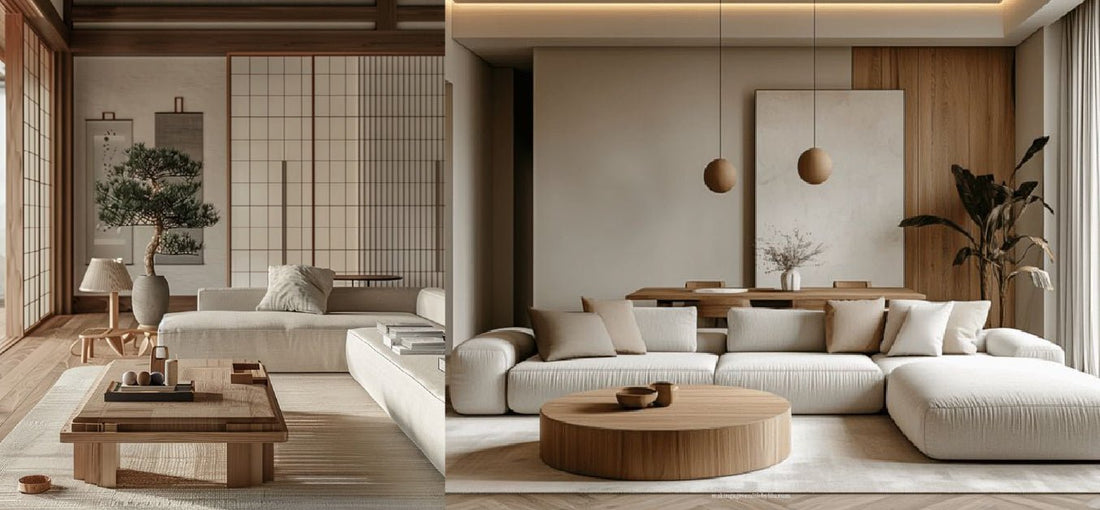
The modern home has become a battleground of visual noise—blaring televisions, cluttered countertops, walls crowded with art that no one truly sees anymore. Yet walk into a Japanese-inspired space and the difference hits immediately: blood pressure drops, breathing deepens, and mind clears. This isn't coincidence or aesthetic preference. It's neuroscience. Studies from Tokyo's Design Institute show that spaces employing traditional Japanese staging principles reduce cortisol levels by up to 27% within minutes of exposure. The techniques aren't complicated or expensive—they're deliberate. Master the interplay of light and shadow, understand the power of negative space, and incorporate natural elements strategically. The result isn't just a beautiful home but a psychological refuge that transforms daily life. In a world where attention is the scarcest resource, Japanese staging offers something beyond decoration—it creates environments that heal.

The Eloquence of Empty Space
In today's cluttered world, the Japanese concept of ma—meaningful emptiness—feels revolutionary. Western design often rushes to fill every corner, treating blank spaces as problems to solve rather than assets to cultivate. Yet in thoughtful Japanese staging, negative space serves as the canvas upon which life unfolds.
Families who embrace this philosophy often begin with a gentle purge—keeping only items that carry genuine meaning or purpose. A cherished heirloom stays while decorative fillers find new homes. What emerges isn't stark minimalism but intentional curation. A single vase placed against an empty wall becomes more striking than a gallery of competing pieces. A room with breathing space invites both physical and mental relaxation.
Designers versed in Japanese aesthetics speak of creating intervals within homes—places where the eye and spirit can rest between moments of beauty. These thoughtful pauses transform how people experience their homes, creating rhythm and cadence in domestic life.

Choreographing Light Through the Seasons
Japanese staging acknowledges a profound truth: homes exist in four dimensions, transforming with the passage of light and time. Traditional Japanese architecture treats sunlight not as an environmental factor to control but as an essential design element to celebrate.
Homeowners seeking this sensibility learn to position windows strategically, tracking the sun's journey across seasons. Winter brings low southern light that stretches across wooden floors, offering natural warmth. Summer's harsh rays are tempered by well-positioned overhangs that shield interiors while still allowing the luminous ambient glow that brings walls to life.
As evening falls, the orchestration of light becomes even more intentional. Rather than flooding spaces with uniform brightness, Japanese-inspired homes create layers of illumination. Table lamps with washi paper shades cast gentle pools of light. Candles flicker in iron holders. These choices transform mundane evenings into moments of quiet ceremony—dinner becomes more intimate, reading more immersive, conversation more genuine.

The Living Elements: Nature as Co-Designer
"Bring the mountain inside," suggests an old Japanese design principle. This isn't about literal interpretation but about acknowledging that natural elements speak to our primal need for connection with the living world.
In thoughtfully staged Japanese-inspired homes, natural elements take center stage. An ancient bonsai might serve as a living focal point, its gnarled form—shaped by decades of patient hands—commanding attention through quiet presence rather than grandeur. A single river stone collected from a meaningful place becomes an anchor of memory and meaning.
These elements aren't decorative afterthoughts but essential participants in the home's story. Seasonal branches in handmade vessels mark time's passage. Children learn to create arrangements alongside adults—rituals that teach more about beauty and impermanence than any lecture could.

The Alchemy of Materials and Meaning
Perhaps the most transformative aspect of Japanese staging is its reverence for authentic materials and their inherent narratives. In an era of mass production, this approach feels revolutionary.
Kitchens featuring reclaimed wood counters honor rather than hide the marks of previous lives. Some homeowners embrace the Japanese technique of kintsugi—filling cracks with gold-infused resin. What might have been flaws become compelling visual elements, telling stories of resilience and renewal.
Textiles hand-dyed using traditional techniques reveal subtle variations that evidence human craftsmanship. Furniture with live edges celebrates the natural forms of the materials from which they came. These elements change with their owners, developing patinas that record a shared history.
In embracing these principles, people don't just change their homes—they transform their relationship with space, time, and the objects that share their daily lives. The dance of light and shadow becomes not just something observed but something participated in, creating homes that nourish rather than merely impress.
And in today's chaotic world, isn't that the true luxury everyone seeks?



